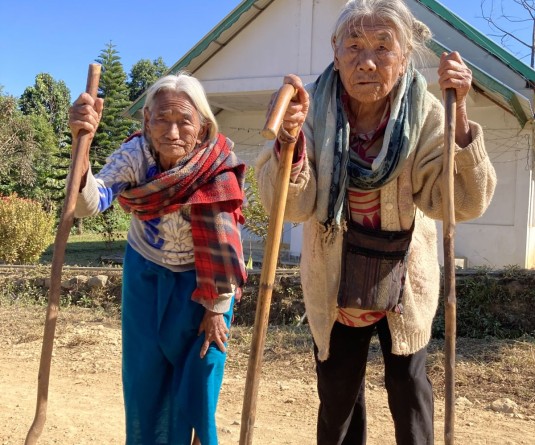
Ashing Muivah
Unity Village
The biggest threat of this present generation and that is to come have an insurmountable challenge, if neglected now would be catastrophic. Studies have shown that the prevalence of any type of substance abuse - smoking, smokeless tobacco products, alcohol - in men in Northeastern states is much higher (20% more) than the rest of India.
According to Nandita Saikia, a co-author of a study, “In Sikkim, for example, only five percent of the men used smokeless tobacco against 56.33 percent in Nagaland. Similarly, smoking varies between 28% in Sikkim to 72.18% in Mizoram.”
As per the National Family Health Survey, Saikia said that 11% of men between 15-19 years consume alcohol while 1% of women of the same age consume alcohol. 29% of men in the age group are associated with substance abuse while it is 4% of women.
The United Nations Office on Drugs and Crime (UNODC) World Drug Report 2022 estimates that around 284 million people use drugs worldwide. The report also claims India is one of the world’s single-largest opiate markets. In India, youth is among the most impacted by the menace. More than 60% of all illicit drugs seized in India are from Punjab. According to a study, most addicts are between the age group of 15 and 35 and many are unemployed.
Manipur itself makes up only 0.91% of the country’s population, the state’s intravenous drug account for 23.1% of the nation’s HIV cases. Manipur has an estimated 30,000 drug addicts, approximately 1/2 of which are intravenous drug users. A 2018 survey identified as many as 6000-7000 drug users in the district, adding that the number of casualty related to drug overdose cases which occurs on regular intervals have reached four in 2021. Drug crisis in Ukhrul district is an increasing concern. The data might not be absolute as there are substantial numbers of latent users which cannot be unaccounted.
This pervasive epidemic of substance abuse is getting out of hand and the catastrophe which is evidently clear and the unprecedented increase in the numbers of vulnerable youths and teenagers getting initiated as days goes by is inconceivable (sad but true).
Remedy: De-addiction then therapies and counselling have proven that it is the most effective and enduring.
According to WHO, substance abuse refers to the harmful or hazardous use of psychoactive substances, including alcohol and illicit drugs. One of the key impacts of illicit drug use on society is the negative health consequences experienced by its members. Drug use also puts a heavy financial burden on individuals, families and society.
The evolution of the complex global illicit drug problem is clearly driven by a range of factors. Socio-demographic trends are influential such as the population’s gender, age and the rate of urbanization.
Cannabis remains the most widely used illicit substance in the African Region. The highest prevalence and increase in use is being reported in West and Central Africa with rates between 5.2% and 13.5%.
Amphetamine-type stimulants (ATS) such as "ecstasy" and methamphetamine now rank as Africa’s second most widely abused drug type. Other substances that were used by children and youth surveyed in Sierra Leone, included benzodiazepines such as diazepam, chlorpromazine and different inhalants, while 3.7% were injecting drugs.
Injecting drugs carries a high risk of infection with blood borne viruses such as HIV, hepatitis B and hepatitis C, and the sharing of contaminated needles and syringes is an important mode of transmission for those viruses.
It’s now or never. To control this menace the Government as a whole and not only the enforcement agencies or NGOs shall have to be proactive; diligently and skilfully combat this social malady. It is an appeal to work together.
The writer has worked as a de-addiction counsellor for 9 years.




